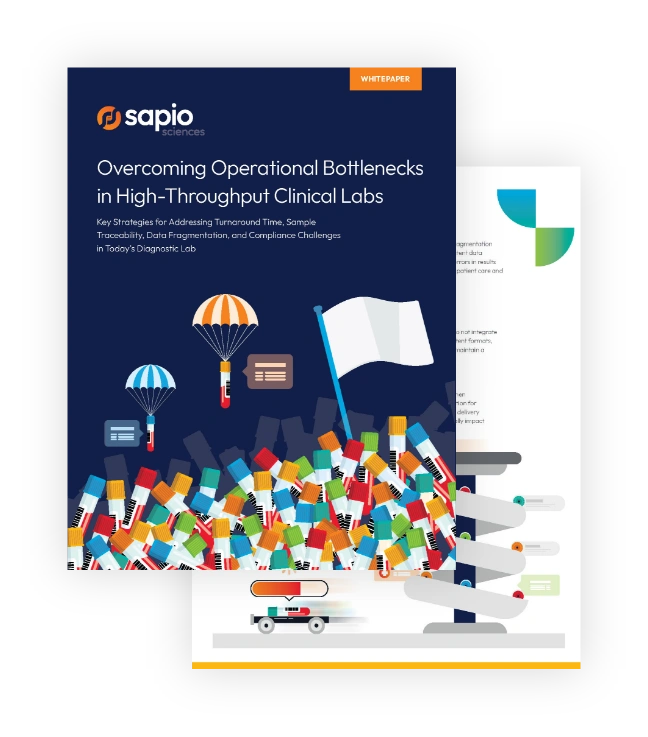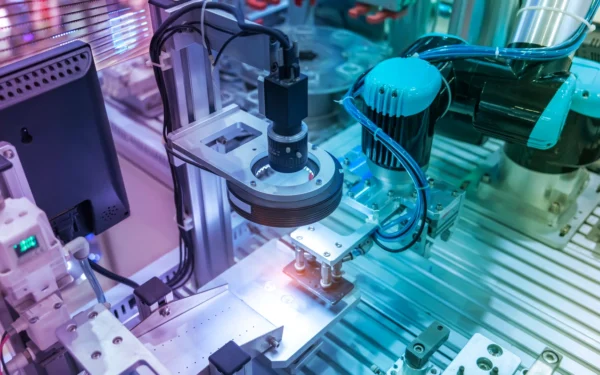

Lab Informatics Resources
Free tools and resources on science-aware™ lab informatics.
5 Critical Signs Your Lab Needs a New LIMS
Introduction
Clinical and Diagnostic laboratories process thousands of samples daily, generating massive amounts of data. Yet, many labs continue to rely on outdated systems, manual processes, and fragmented workflows, leading to inefficiencies, errors, and compliance risks.
If your lab is struggling with slow turnaround times, missing samples, disorganized data, or growing regulatory challenges, it may be time for a modern Laboratory Information Management System (LIMS). This article outlines five key indicators that signal the need for an advanced LIMS and how the right solution can enhance efficiency, accuracy, and compliance.
1. Delays in Turnaround Time (TAT) Are Impacting Operations
The Challenge:
Turnaround time (TAT) is critical in clinical diagnostics. When results are delayed, it can affect patient outcomes, disrupt workflows, and frustrate stakeholders.
Key contributors to slow TAT include:
- Manual processes for sample accessioning and order processing.
- Disjointed workflows that lack automation and real-time tracking.
- Workforce inefficiencies due to reliance on outdated tools and redundant tasks.
The Solution:
A modern LIMS optimizes workflow efficiency by:
- Automating sample processing, order entry, and results reporting.
- Enabling real-time sample tracking to identify and resolve bottlenecks quickly.
- Standardizing workflows to ensure urgent samples receive priority handling.
By implementing an end-to-end LIMS, labs can accelerate decision-making, ensuring results are available when they matter most.
2. Sample Traceability Issues Are Leading to Errors
The Challenge:
Lost, mislabeled, or mishandled specimens introduce serious risks, from delayed treatments to erroneous results. Many labs struggle with incomplete chain-of-custody tracking, increasing the likelihood of errors.
Common issues include:
- Manual accessioning mistakes that lead to sample mix-ups.
- Lack of real-time tracking, making it difficult to locate samples in transit.
- Fragmented systems that do not maintain complete specimen histories.
The Solution:
A LIMS ensures complete sample traceability by:
- Implementing barcode-based digital accessioning to minimize human errors.
- Maintaining automated chain-of-custody tracking, from collection to disposal.
- Offering real-time status updates, providing instant visibility into sample location and status.
With a modern LIMS, labs can mitigate specimen loss, improve traceability, and safeguard result integrity.

Download the White Paper “Overcoming Operational Bottlenecks in High-Throughput Clinical Labs”
3. Data Fragmentation Is Slowing Down Reporting
The Challenge:
Many clinical labs rely on multiple disconnected systems that store data in silos. This fragmented approach leads to inefficiencies, delays, and inconsistencies in reporting.
Common issues include:
- Lack of integration between instruments, software platforms, and reporting tools.
- Redundant data entry, increasing the risk of inconsistencies and errors.
- Slow reporting processes, delaying result availability for patients and physicians.
The Solution:
A unified LIMS eliminates data fragmentation by:
- Integrating seamlessly with lab instruments and external platforms.
- Automating data collection to ensure consistency and accuracy.
- Consolidating information into a single, accessible system for real-time reporting.
A centralized LIMS enables faster, more accurate reporting, improving efficiency across the lab.
4. Compliance Risks Are Increasing
The Challenge:
Regulatory compliance is a cornerstone of clinical laboratory operations. Labs must adhere to stringent standards such as CLIA, CAP, FDA, and ISO regulations. However, many struggle with outdated compliance tracking methods.
Signs of compliance risks include:
- Manual record-keeping, making audits time-consuming and error-prone.
- Limited regulatory visibility, increasing the risk of non-compliance.
- Lack of automated audit trails, leading to gaps in documentation.
The Solution:
A LIMS enhances compliance management by:
- Automating audit trails to maintain complete, tamper-proof records.
- Standardizing data documentation to align with regulatory requirements.
- Enabling real-time compliance monitoring, ensuring adherence to industry standards.
With built-in compliance features, a LIMS reduces regulatory risks and streamlines audit readiness.
5. Lab Staff Are Overburdened with Manual Processes
The Challenge:
A reliance on manual workflows can lead to inefficiencies, increased workloads, and staff burnout. Many laboratories still perform tasks like data entry, sample tracking, and report generation manually, leading to errors and slowdowns.
Key concerns include:
- High labor costs due to time-consuming administrative tasks.
- Frequent data entry mistakes, affecting result accuracy.
- Limited automation, reducing operational scalability.
The Solution:
A modern LIMS alleviates workload pressures by:
- Automating routine tasks, freeing up staff for higher-value activities.
- Reducing data entry errors through integrated digital workflows.
- Optimizing resource allocation, ensuring efficient use of personnel and instruments.
By adopting a LIMS with configurable, automated workflows, labs can enhance productivity and alleviate staff burden.
Choosing the Right LIMS for Your Lab
When selecting a new LIMS, it’s essential to consider:
- Configurability: Can the system adapt to your lab’s needs?
- Integration: Does it connect with existing instruments and software?
- Scalability: Will it support future growth?
- User Experience: Is it intuitive for lab personnel?
- Regulatory Compliance: Does it meet industry standards?
A future-ready LIMS should not only address current operational bottlenecks but also evolve with your lab’s changing needs.
Conclusion: Future-Proof Your Lab with a Next-Generation LIMS
If your lab is experiencing any of these five critical signs—slow turnaround times, traceability challenges, data fragmentation, compliance risks, or staff inefficiencies—it’s time to consider upgrading to a modern LIMS.
A configurable, no-code LIMS like Sapio LIMS offers a powerful solution to optimize workflows, improve data integrity, and ensure regulatory compliance. By investing in the right LIMS, your lab can achieve greater efficiency, accuracy, and scalability.
Ready to transform your lab operations?
Learn more about Sapio LIMS today.


